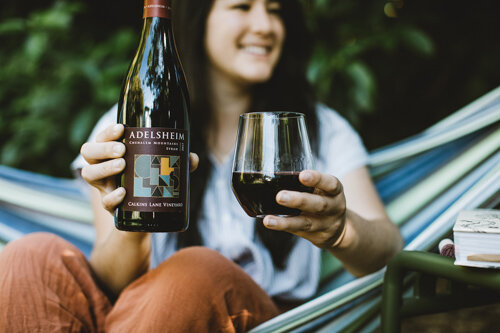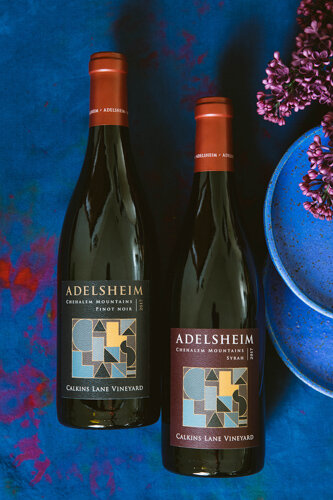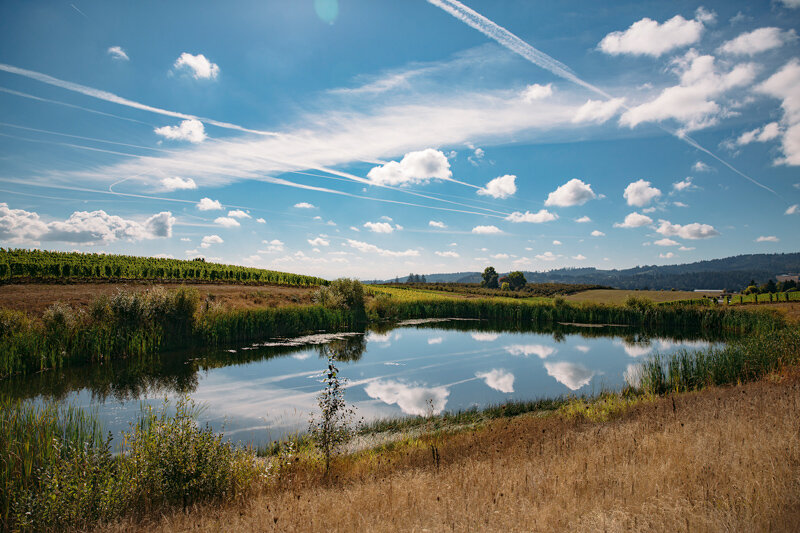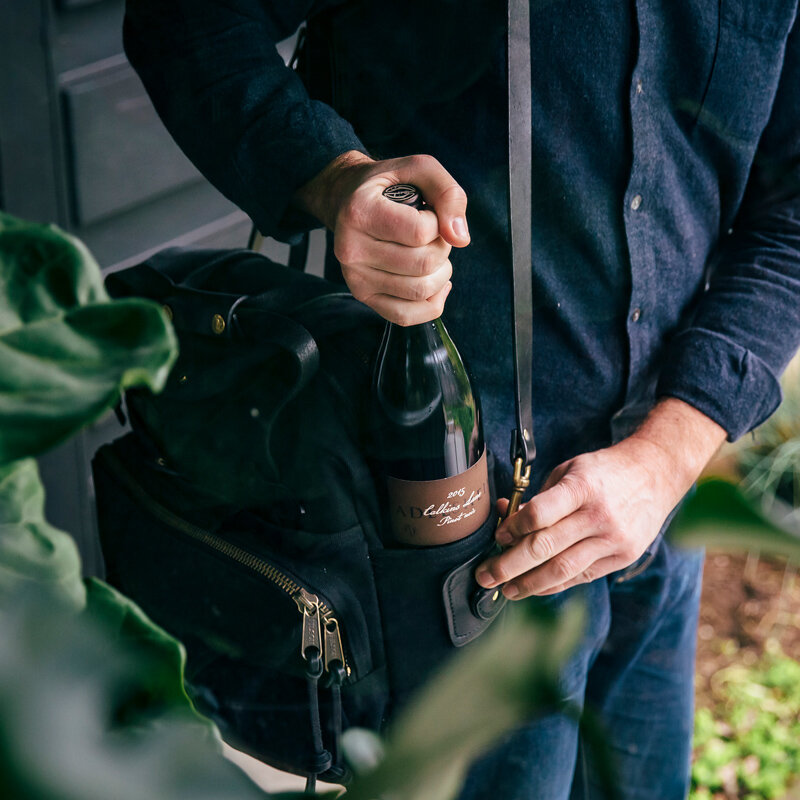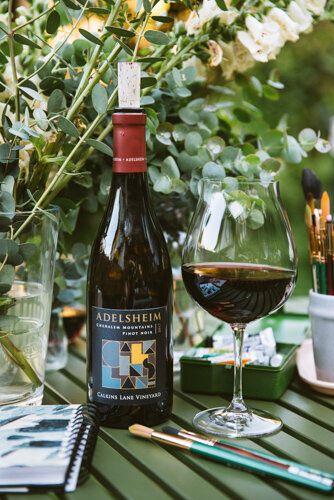The Calkins Lane Vineyard Origin Story
David and Ginny Adelsheim
“In 1988, Ginny and I needed land to plant more vineyards on. At that point we had only the 15 acres planted on our original vineyard, Quarter Mile Lane, and we were having to buy grapes to make enough wine to keep our customers supplied. We were buying from whoever was willing to sell their grapes to us. Unfortunately, there weren’t any such growers near us. During harvest, I put a lot of miles on my car, driving to check on grape ripeness at every vineyard. And not just to vineyards in the Eola Hills (like Seven Springs) but even further to vineyards in southern Oregon for Merlot.
In March of that year, we found out about a property just four miles from us. The Oregon Department of Veterans’ Affairs had terminated a loan on the 54-acre piece and needed a qualified veteran to take over the loan. It was on Calkins Lane, mostly planted with hazelnuts and some walnuts, with a run-down house, garage and shed. From a viticultural standpoint, all we knew is that Dick Erath once looked at Calkins Lane and had rejected the site because the soils where he looked contained a lot of “shot” (iron oxide crystals?) It was much lower in elevation (250 feet above sea level) than our first vineyard (650 feet) and that probably meant grapes planted there would ripen earlier. The property sloped just a bit and mostly to the south. It would be easy to farm. The hazelnut trees were very sick; the walnuts were old.
It took a while to convince the ODVA that we could actually continue to make the payment due on the loan. But after seven months of exchanged questions and responses, we took over the loan in October 1988.
The first vines were planted in the Spring of 1990 – 15½ acres of Pinot gris. Chardonnay (six different “Dijon” clones,) 6.4 acres, followed in 1993 and 1994. In early 1996, our friend David Graves, partner at Saintsbury in Napa, sent us 6.3-acres worth of grafted Pinot noir vines to plant. They were a thank-you gift for sending Saintsbury cuttings of the “Dijon” clones of Chardonnay and Pinot noir two years earlier.
By the late 1990’s, the differences between our vineyards on Quarter Mile Lane and Calkins Lane started to make themselves known. The first thing we noticed was the Pinot gris wines made from Calkins Lane fruit seemed to lose their fruitiness quickly. A trip to southern Germany suggested we had “UTA” (atypical aging.) The cause appeared to be a lack of water during the final ripening period. What we finally figured out was that there was a major difference in soil type at Calkins Lane, compared to what we were used to at Quarter Mile Lane. At Calkins Lane we had marine sedimentary soils and Missoula Flood soils; both were mostly silt with a little sand; and both contained very little clay. Clay is critical for holding water through our droughty summers. Thus, though we got as much rainfall as at Quarter Mile Lane, very little of that rain was being retained in the soils until the critical drought months of July and August.
The effect of the dryness in Pinot noir was not as obvious as with Pinot gris, but the wines were completely different from what we were used to at Quarter Mile Lane. At Calkins Lane, the wines were very dark (black fruited,) and had more tannins, too. The first thing we did to try to remedy the situation was to remove all the cover crop in the Calkins Lane vineyard, between the rows and under the vines. That kept the weeds and grasses from competing with the vines for what little water there was. Next, we got approval to build a reservoir to irrigate the vines at the end of summer. Both of these things helped. Over the last 25 years, we’ve also looked at our winemaking, particularly at earlier picking and a much lighter touch during fermentation.





